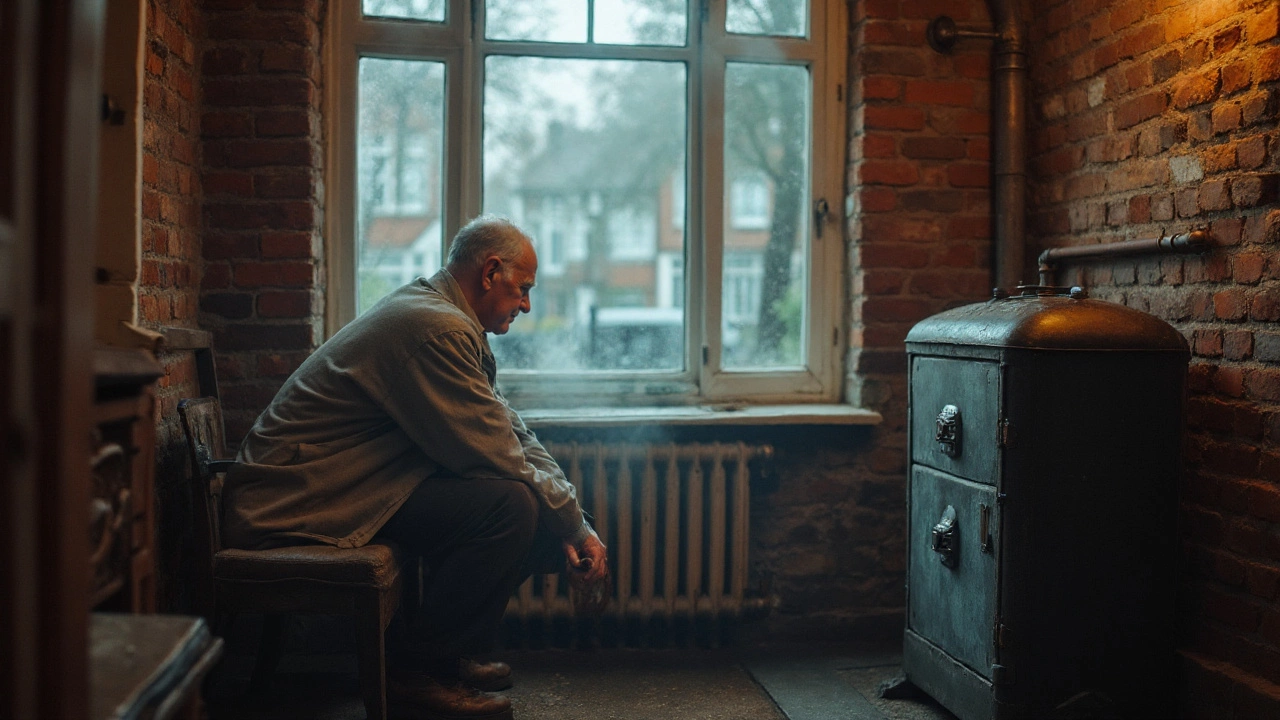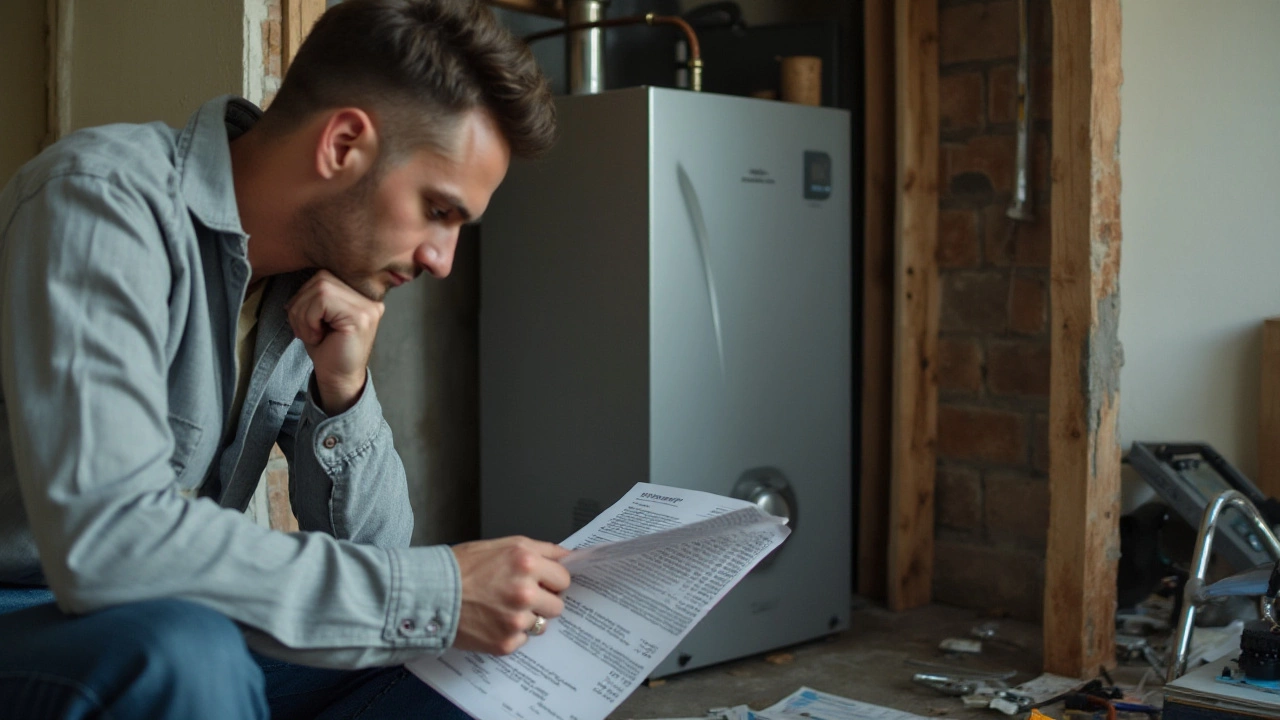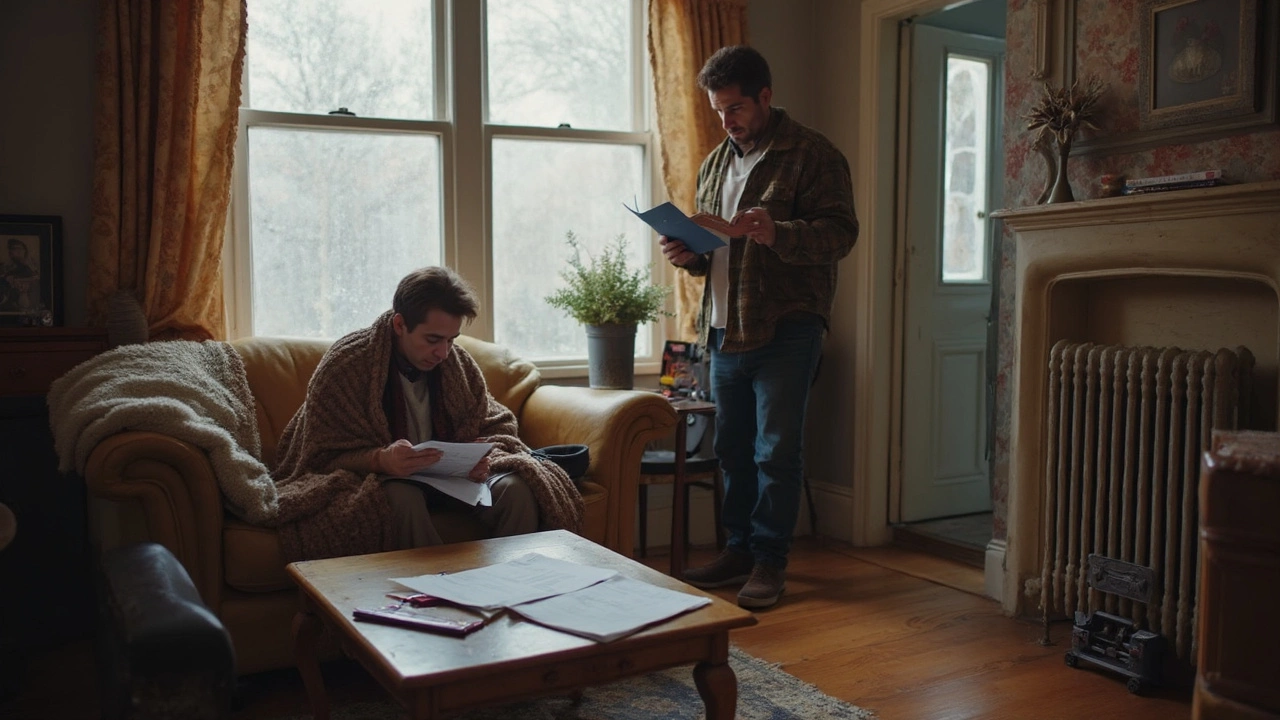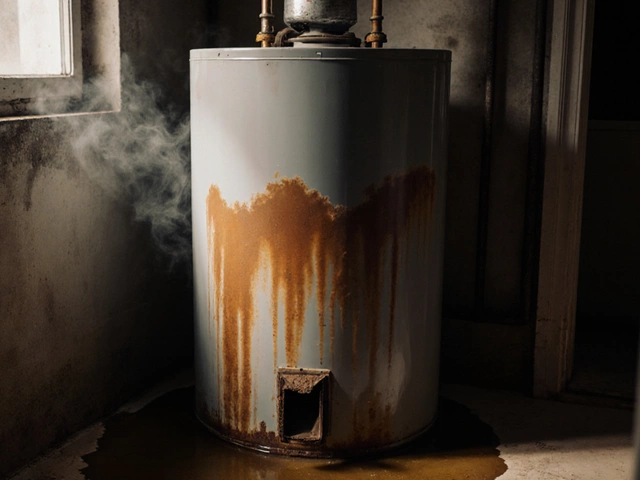Boiler problems never show up at a good time—usually when it’s freezing and you’re already stressing about school runs and Rex needing a walk. Thinking about replacing the whole thing might feel like biting off more than you can chew. Is swapping out a boiler really a massive job, or just a few hours with a wrench and a mug of tea?
If you’re picturing torn-up floors or weeks without hot water, it’s not always that dramatic—but there are some tricky parts. Replacing a boiler is more than unplugging the old and plugging in the new. There’s the mess factor, new regulations to think about, changes with pipework, and making sure your home’s not left cold in the meantime.
The good news? Swapping a like-for-like boiler is usually easier (think same spot, same type). But if you want to change things up—like moving the boiler’s location or switching from a combi to a system model—expect a bit more: more hours, sometimes more mess, and a bigger invoice. Plumbers have some grim tales of hidden surprises in ancient pipework or awkward-sized cupboards. Fixing those can take longer than the job itself.
It all comes down to the prep and having realistic expectations. Get the right info up front, and you won’t end up shivering in your dressing gown wondering when the hot water’s coming back.
- What Makes Boiler Replacement a Big Deal?
- Steps Involved in Swapping Your Boiler
- Hidden Surprises and How to Avoid Them
- Cost and Time: What to Really Expect
- Tips for a Stress-Free Boiler Upgrade
What Makes Boiler Replacement a Big Deal?
So why does replacing a boiler feel like such a mountain to climb? For starters, boilers aren’t like your average kitchen appliance. They’re hooked into your home’s main systems: water, gas, electrics, and central heating. Mess with one connection, and you risk knocking the whole lot out of whack. Plumbers can’t just plug-and-play—they have to follow some serious safety rules. Ever since 2005, the UK made it law that most new boilers have to be condensing models, which means changes in flue (that’s the chimney bit) and how the pipes run. There are rules about where flues can exit, how close they are to windows, and even how the water drains away from condensation. Nothing you really want to get wrong.
Then there’s the age and type of your existing setup. If your system is old, rusted, or forced into some impossible space—like behind a cupboard stacked with paint cans—you can count on extra work. Sometimes, my own boiler adventures have turned into a quest to figure out what the last owner was thinking. Pipework can also be a big headache. Older homes often have pipes that aren’t up to the job for a new boiler, so they have to be switched out too. That means cutting, soldering, and running new lines, and often pulling up a few floorboards.
The biggest deal-breaker? The fact that you’ll be without heat or hot water for at least a few hours—sometimes a day—depending on how much needs changing. If you’re switching boiler types or moving the unit, expect a full day or two. You kind of need to clear your plans, keep the kettle full, and brace for some mess.
Boiler replacement also isn’t a DIY thing. A boiler replacement must be handled by a Gas Safe registered engineer (or OFTEC for oil), and you need a building regs certificate after the work is done. It’s all about keeping the family—and Rex—the right side of safe and warm.
Steps Involved in Swapping Your Boiler
Getting a new boiler fitted isn’t a quick job you can knock out on a lunch break. There are clear steps your engineer follows to make sure your heating gets sorted safely. Knowing what’s coming gives you a leg up—you can plan around the noise, mess, and the short time your house will be chilly.
- Boiler replacement survey: A proper swap starts with a home visit. The engineer checks your current boiler, takes note of the model, your pipework, and where everything’s sitting. You’ll talk through why you want a new one (age, money savings, endless breakdowns) and if you want things moved—like taking the boiler out of the kitchen and tucking it away in the loft. They’ll size up your needs and recommend a model.
- Power flush (if needed): If your system is old or there’s sludge in the pipes, you might need a power flush. It’s basically a big clean out to prevent your new boiler getting ruined straight away. Skipping this can wreck efficiency.
Tip: For older homes or those with rusty radiators, doing a flush is worth it and often required for the warranty. - System shut down and drainage: On fitting day, the heating and hot water get switched off and the system is drained. No showers and no cups of tea with water from the tank right now.
- Removing the old boiler: Out comes the old unit. Engineers also remove outdated bits—like tanks in the loft or exposed copper pipes—if you’re switching boiler types.
- Installing your new boiler: The new model gets connected up—plumbed, wired, and fixed onto the wall. This is fiddlier if you’re moving positions or changing types (like upgrading from a regular boiler to a combi). The right size and placement matter for future repairs and safety checks.
- Connecting extras: Modern boilers often come with smart controls, thermostats, carbon monoxide alarms, or magnetic filters. The engineer sets these up, helping your fuel bills drop over time.
- Testing and commissioning: This step’s not just flicking a switch. The engineer checks gas pressure, tests the controls, bleeds radiators, and makes sure everything runs quietly. They should register the boiler for the warranty and show you how to run it and top up pressure.
- Tidy-up and handover: Most decent installers clean up after themselves. You’ll get all the manuals and a certificate for building regs.
If you're curious about how long all this takes, here's a quick guide:
| Type of Replacement | Average Time (hours) |
|---|---|
| Like-for-like swap (same location) | 4–6 |
| Change of location | 8–12 |
| Conversion (system to combi) | 1–2 days |
Most swaps take less than a day if nothing sneaky pops up. If your home’s older or things need moving, it can spill into a second day—so make sure you’ve got back-up plans for hot drinks, showers, and snacks.

Hidden Surprises and How to Avoid Them
Boiler replacement isn’t always what you expect. Sometimes, what looks like a straightforward swap turns into a long-day job because of things hiding behind walls or in crawlspaces. Let’s get real about the common curveballs so you’re not caught off guard with extra costs or extra hassle.
Old pipework is a sneaky one. Many homes in the UK have copper pipes from decades ago that may be too narrow or corroded for newer boilers. Swapping out pipework can take extra time and money. Even basic things like clogged radiators or ancient valves can slow things down, especially if no one’s checked your heating system in years.
Another classic issue: flue problems. Modern boilers have stricter venting requirements, so the installer may need to make a new hole for the flue, patch up brickwork, or even get building approval. Then there’s wiring. Some older setups don’t meet current safety standards, which means extra electrical work before your boiler gets the all-clear.
One in every five jobs, on average, runs into something tricky—usually rusted connections or nests of wires nobody expected. Here’s a quick peek at the ‘surprise’ league table from a survey of 200 heating engineers last year:
| Common Surprise | % of Boiler Jobs Impacted |
|---|---|
| Poor pipe condition | 32% |
| Outdated electrics | 24% |
| Flue issues | 19% |
| Inaccessible locations | 13% |
| Unforeseen leaks | 12% |
So, how do you dodge all these problems and avoid the dreaded “it’ll cost more” chat?
- Get a proper survey before any tools come out. A reputable installer will check pipes, electrics, flues, and access.
- Ask for a fixed quote, not just an estimate. Make sure it includes potential extras.
- Clear the area around the boiler and remove anything blocking access. Trust me, that’ll save you a headache.
- If your house is older than Tristan’s Lego collection, expect some pipe or wiring updates.
- Always check that your installer is Gas Safe-registered—no shortcuts here, it’s for safety and insurance.
Tackling a boiler replacement gets loads simpler when you know what’s coming. The more you prep, the less likely you’ll get stung by surprises.
Cost and Time: What to Really Expect
Wondering how much a new boiler is really going to set you back, and how long you'll be living with tradespeople in your house? It’s smart to get real figures before you commit to anything. Let’s cut to the chase about money and time.
For a basic boiler replacement—that’s swapping the same type in the same spot—you’re looking at around £1,800 up to £3,000 in the UK. This covers the boiler, installation, and any parts the engineer swaps out along the way (like valves or pipes, which add up fast). If you’re moving the boiler or upgrading to a bigger, fancier system, numbers easily hit £4,000 or more. And yes, prices can vary by location—London or the southeast always cost more than, say, Yorkshire.
Time-wise, a straightforward swap can often be wrapped up in a day—six to eight hours is the ballpark if no surprises pop up. Upgrades or boiler moves can stretch into two or even three days, especially if the engineer has to reroute pipes or deal with weird old plumbing left by previous owners. And remember, there’s always that chance they’ll run into stubborn rusted pipes, awkward access issues, or ancient wiring.
| Type | Average Cost (UK) | Average Time |
|---|---|---|
| Like-for-like replacement | £1,800-£3,000 | 1 day |
| Upgrade or move | £2,800-£4,000+ | 2-3 days |
There are some extra costs to keep in mind:
- Disposal of your old boiler (some companies charge for this, some don’t)
- System flush if your pipes are gritty or sludgy—an extra £400 isn’t unusual
- Control upgrades, like smart thermostats
- Extended warranties (sometimes worth it for peace of mind, but check the small print)
Don’t just look at the headline price. Ask what’s included, what happens if they find bad pipework, and if you’ll be left without heating overnight (usually not, but worth checking if you have kids or pets). A clear, written quote saves hassle later.
If you’re keen on saving, try to book boiler work outside of winter—engineers aren’t as slammed and sometimes offer better rates. And always check if there are any grants or cashback deals in your area; government boiler upgrade schemes can trim costs by hundreds.
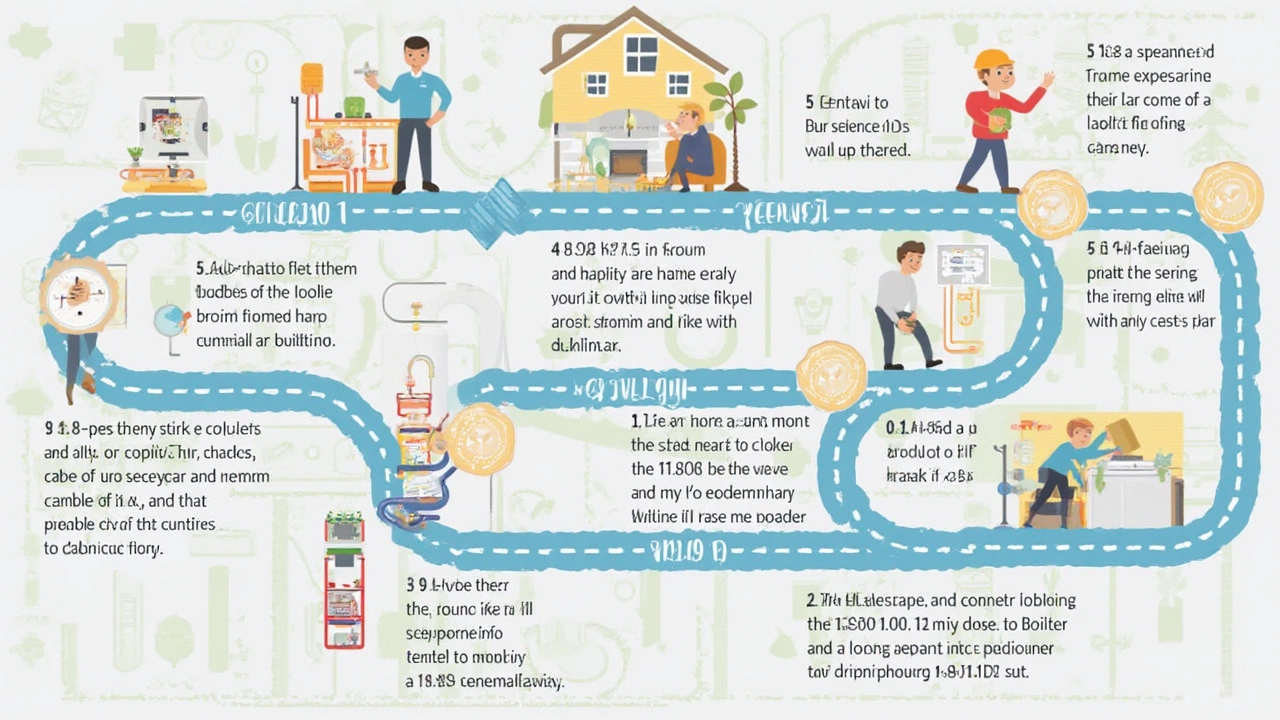
Tips for a Stress-Free Boiler Upgrade
Nobody chooses a boiler replacement for fun, but you can make the whole thing a lot smoother if you know a few tricks and come prepared. Here’s what works best, based on real-world mess-ups and wins.
- Boiler replacement is best done by a Gas Safe registered engineer. Always check their ID—no exceptions. It keeps you covered for insurance and safety.
- Ask for detailed quotes in writing. The more exact you get, the less likely you’ll end up facing surprise charges. Get at least two quotes, maybe even three, so you can spot anything weirdly expensive.
- Pick your timing. Loads of people wait until their boiler totally packs up, which usually means a frantic replacement in winter. Try planning the work in late spring or summer, when engineers aren’t so packed. You’re less likely to be left without heat or hot water when you actually need it most.
- Clear the area and think about your home’s mess zones. Move stuff away from where the engineers will work—Tristan once lost his favourite LEGO minifig down a floorboard gap during our last upgrade.
- Tell the installer if you’ve got pets or kids, so they plan around it. Rex once made off with a plumber’s glove, so now we keep him out of the way.
- If you’re changing location—like moving the boiler from the kitchen to the loft—ask about how your floors, ceilings, or walls might be affected. Pipework changes can be more involved than you think.
- Feel free to ask about guarantees. Most new boilers come with 5-10 years, but only if they’re installed by approved engineers and serviced yearly.
It also helps to know what the schedule will look like, so you’re not left freezing. Here’s a handy breakdown on what to expect time-wise for common jobs in the UK:
| Boiler Type | Same Location? | Typical Completion Time |
|---|---|---|
| Combi to Combi | Yes | 1 day |
| Combi to System | No | 2 days |
| System to System | Yes | 1-1.5 days |
| Relocating Boiler | No | 2-3 days |
Last tip: set aside some cash just in case the installer finds dodgy pipework or old electrics that need sorting. It’s annoying, but fixing hidden problems beats dealing with leaks or heating issues later. Keep all the paperwork somewhere safe, as you’ll need it for warranties and selling your house down the road.
Handle these things up front and you’ll dodge most headaches, and your home will stay warm without unnecessary drama.

